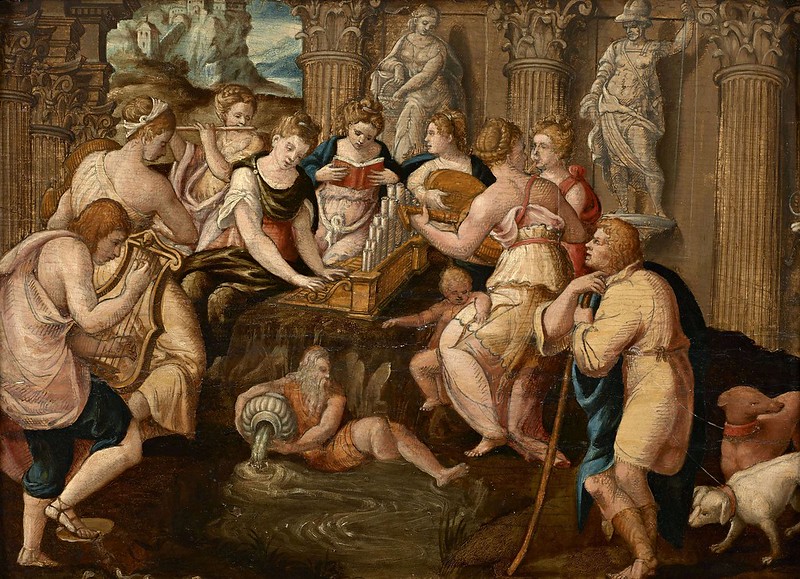Dietrich Buxtehude (1637-1707)
- Herzlich lieb hab ich dich, o Herr, BuxWV 41
Performers: The Heinrich Schuetz choir of Heilbronn; The Southwest Radio
orchestra of Baden-Baden;
Fritz Werner (1898-1977, conductor)
Further info: Buxtehude – Deux Cantates
---
German organist and composer. His father, Johannes Buxtehude, was
appointed organist at the Olaikirche in Elsinore, Denmark, in 1641,
where Dietrich attended the Latin school and probably began his musical
education with his father. In 1660, he became organist at the
Marienkirche in Elsinore. On 5 November 1667, Franz Tunder, organist at
the Marienkirche in Lübeck, one of the most important musical posts in
north Germany, died, and on 11 April 1668, Buxtehude was chosen out of a
field of several applicants to replace him. With this appointment,
Buxtehude became, in effect, the director of all musical activities in
the city save the opera. He became a citizen of Lübeck on 23 July 1668
and on 3 August married Tunder’s daughter Anna Margarethe. It is
possible that the marriage was a condition of employment, a customary
practice that would apply to Buxtehude’s own successor. They had seven
daughters together. At the Marienkirche, he played a large organ of 52
stops, and he composed into his own organ works a range of divisional
contrasts, including demanding parts for the pedal division, which alone
had 15 stops, more than any of the three manual divisions. The preludes
for which he is best known alternate improvisatory passages (the stylus
phantasticus) with strict imitative passages very often developed into
full-blown fugues. The keyboard suites follow the “classic” French
pattern of allemande- courante-sarabande-gigue, with an occasional
double, the opening three dances often based on the same thematic
material. For his sacred vocal works, Buxtehude draws prose texts from
either the Lutheran German Bible or the Latin Vulgate, setting them as
sacred concertos, or spiritual poetry.
If the poetry is associated with a chorale melody, that melody may be
set in a variety of ways ranging from a traditional cantus firmus to a
contemporary aria form. In 1678, Buxtehude expanded the tradition of
Abendmusik organ recitals at the Marienkirche to include sacred
concertos and oratorios on spiritual themes presented on five specific
Sundays of the liturgical year. These concerts featured vocal soloists
and extensive instrumental accompaniment. On 16 May 1707, Buxtehude was
buried in the Marienkirche. Regarded since the 18th century chiefly as
the most influential organist in the generation before Johann Sebastian
Bach, recently the recovery and recording of Buxtehude’s vocal and
ensemble music have broadened his reputation. The young Bach’s famous
pilgrimage from Arnstadt to Lübeck in 1705 to visit Buxtehude is well
known, but Buxtehude also entertained George Frideric Handel and Johann
Mattheson in 1703 and was the dedicatee of Johann Pachelbel’s 1699
publication Hexachordum Apollinis. For organ, he composed 3
self-standing fugues, 3 well-known ostinatos (1 passacaglia, 2
chaconnes), 8 canzonas, 5 toccatas, and 22 “preludia,” which almost
always contain extended fugues along with improvisatory music. He also
left 47 chorale preludes and chorale fantasias for organ and at least
113 sacred vocal works on Latin and German texts, most in the form of
chorale settings and sacred concertos. Three librettos for oratorios
survive, but the music is lost. His secular music includes 17 keyboard
suites (including, perhaps, the 7 suites composed on the character of
the planets, mentioned by Mattheson), 5 variation sets, and at least 23
sonatas, most requiring violin and viola da gamba.

Cap comentari:
Publica un comentari a l'entrada